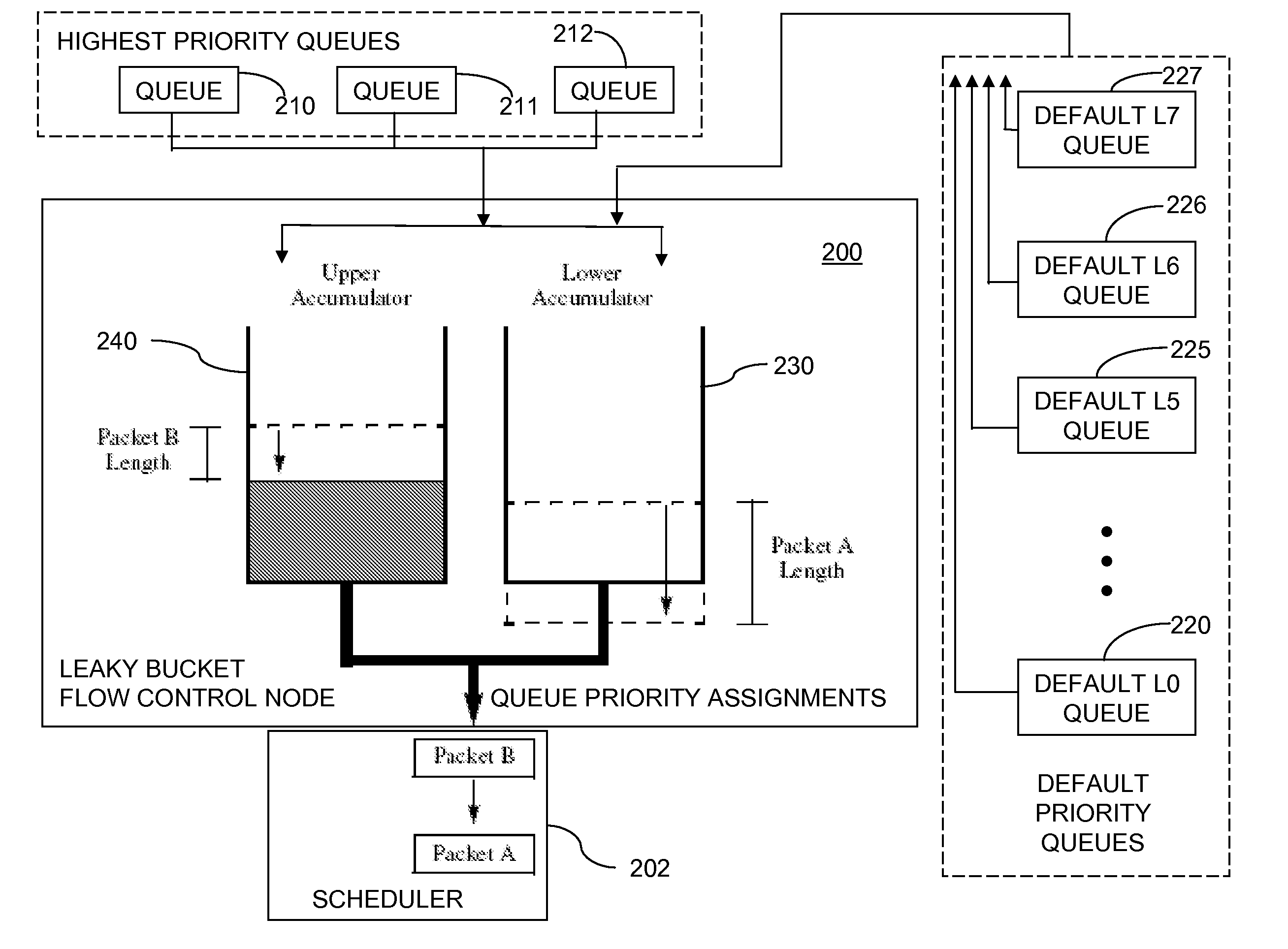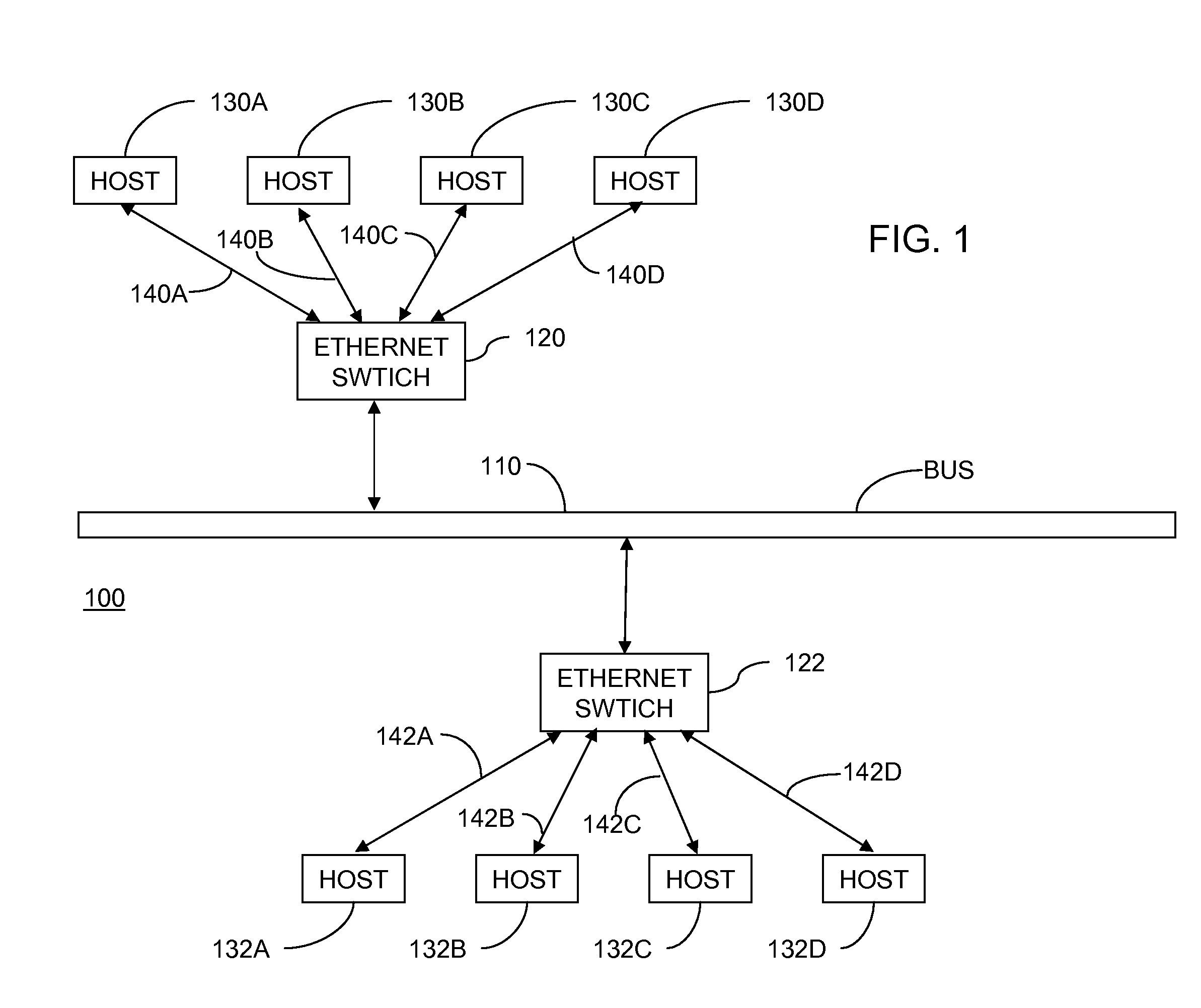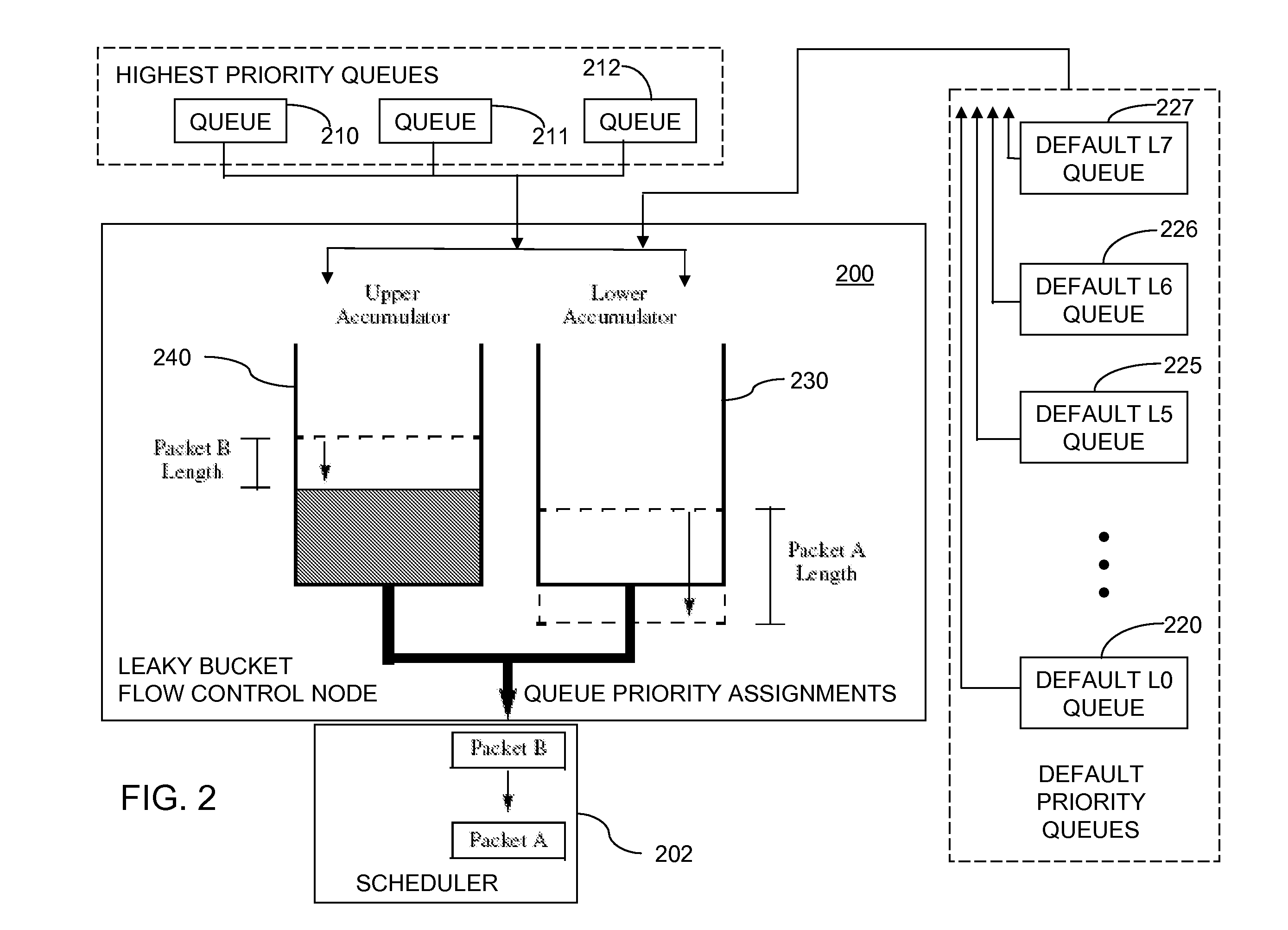Dual Leaky Bucket Flow Control Method and System
a flow control and leaky bucket technology, applied in the field of communication traffic flow control methods and systems, can solve the problems of increasing the accuracy of the rate being measured by the lower bucket, increasing the error rate, and reducing the accuracy of the leaky buck
- Summary
- Abstract
- Description
- Claims
- Application Information
AI Technical Summary
Benefits of technology
Problems solved by technology
Method used
Image
Examples
example
[0056]FIGS. 4A and 4B show the lower and upper accumulator states for a case in which four 9K packets are scheduled back-to-back by way of the same queue. The update period for the accumulators is 7000 clock cycles. The maximum transmission rate is roughly 4000 bytes per accumulator update cycle, so it takes approximately 2¼ update periods, or 18,000 cycles to process one 9K packet.
[0057]In this example, the upper shaper's delta / limits are set to 4000, or the maximum rate allowed.
[0058]The minimum rate is set to 2000, which equates to about half of the maximum rate. Since only the first packet is sent at high priority, the next high priority packet occurs at (2×2¼) update periods which equates to every other packet, or half of the maximum rate which is exactly what is expected.
[0059]The linked approach to the token accounting described above serves to unify the two physically separate accumulators 230, 240 into one logical leaky bucket. The lower shaper 230 ensures a minimum packet ...
PUM
 Login to View More
Login to View More Abstract
Description
Claims
Application Information
 Login to View More
Login to View More - R&D
- Intellectual Property
- Life Sciences
- Materials
- Tech Scout
- Unparalleled Data Quality
- Higher Quality Content
- 60% Fewer Hallucinations
Browse by: Latest US Patents, China's latest patents, Technical Efficacy Thesaurus, Application Domain, Technology Topic, Popular Technical Reports.
© 2025 PatSnap. All rights reserved.Legal|Privacy policy|Modern Slavery Act Transparency Statement|Sitemap|About US| Contact US: help@patsnap.com



